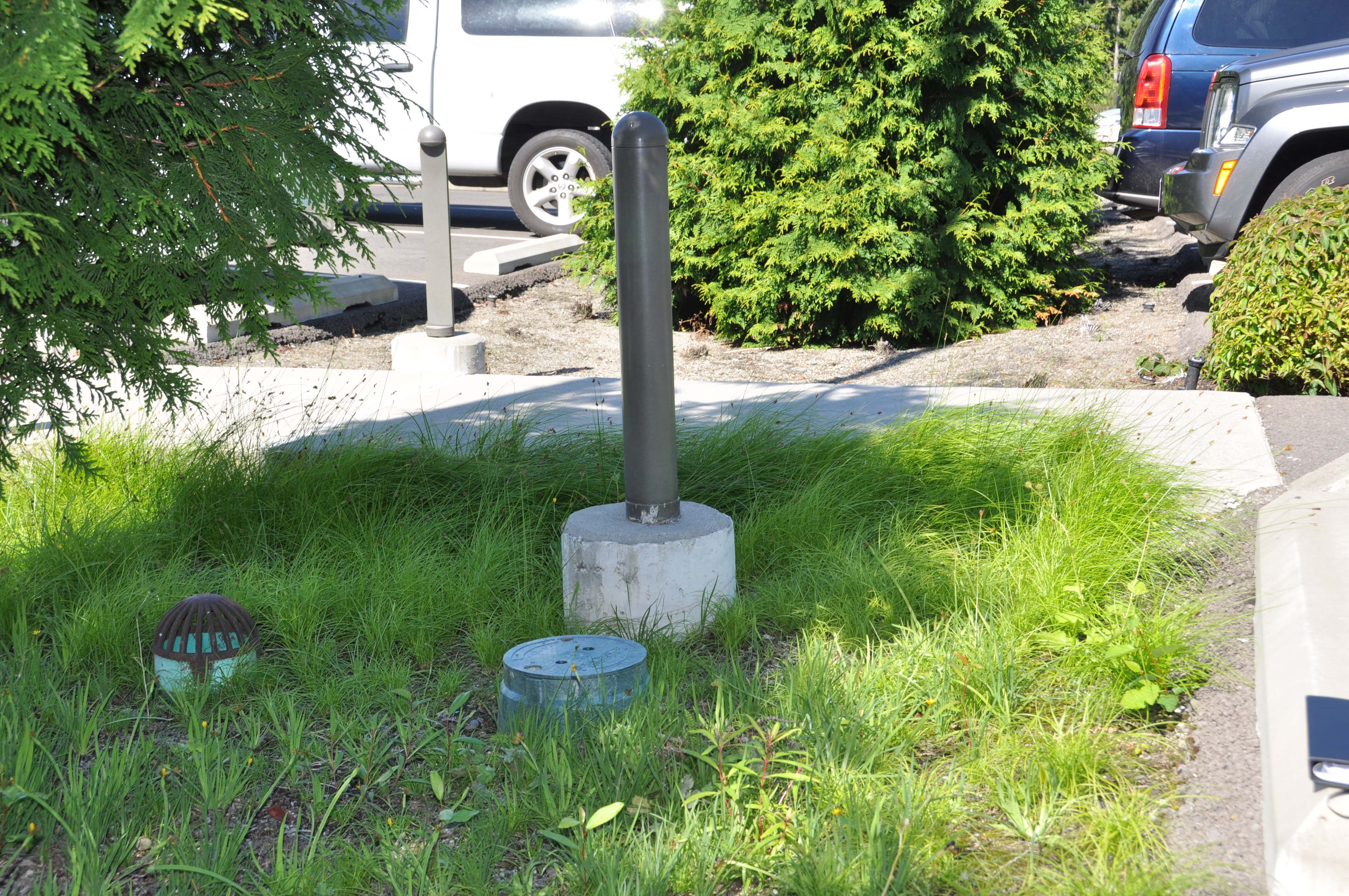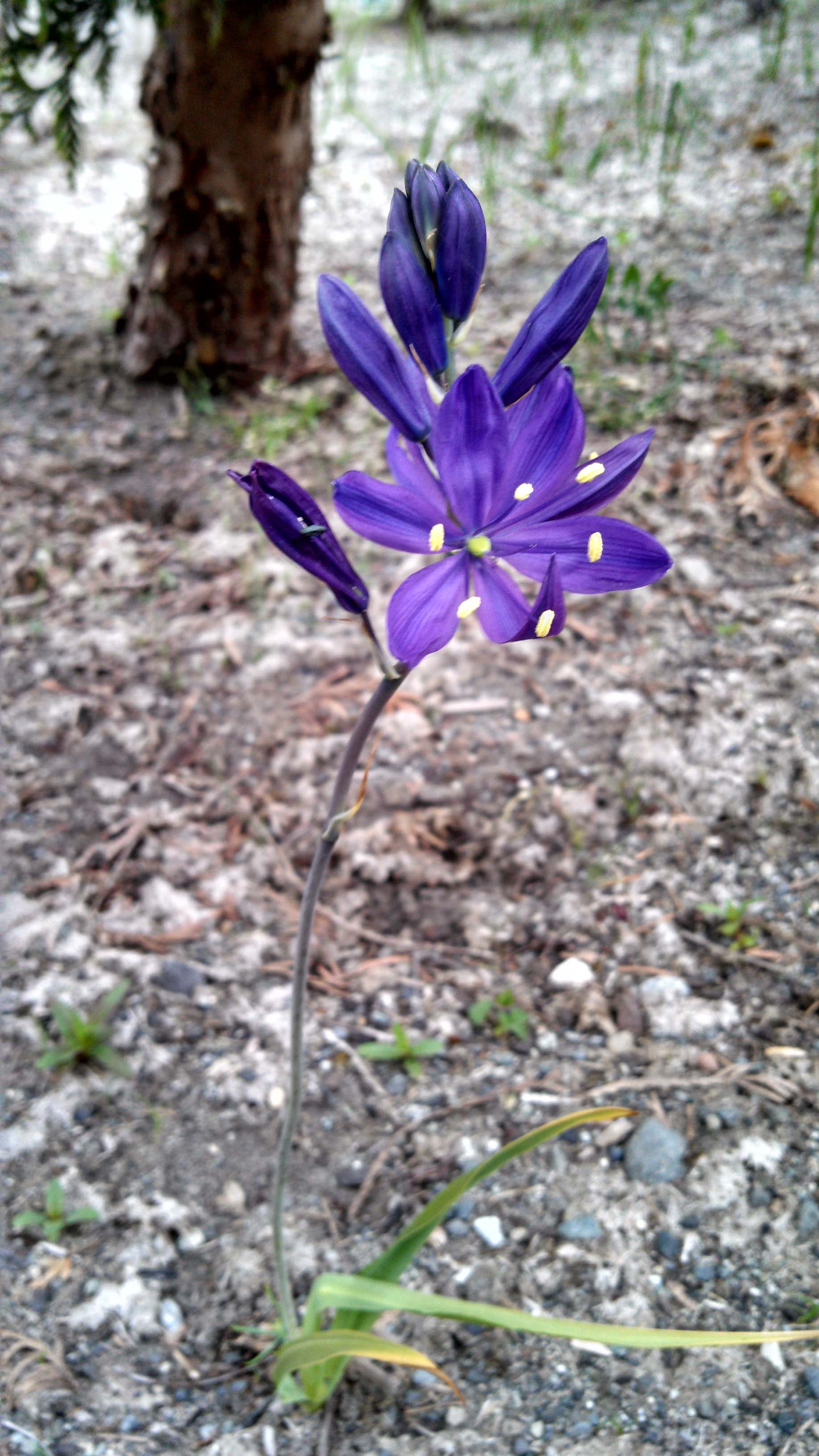
Photo by Monica Brown
By Monica Brown, Tulalip News writer
TULALIP, Wash. – The rain gardens at the Tulalip administration building have had a year to flourish, and flourish they have. When you drive through the parking lot you see trees in the garden strips along with some shrubs, but towards the back you can see a spray of green areas that are roped off. Some people are not aware that these roped off garden areas are not weeds, but are native vegetation and they were chosen specifically for their ability to remove pollutants.
“It’s a menagerie, but that’s how it was designed, to be low growing and provide a green landscape that would help filter out the pollutants,” said Derek Marks of Tulalip Natural Resources.
Last year, the Natural Resources department was able to take a few garden areas within the admin building parking lot and turn them into rain gardens. Shortly after it was completed it had been sprayed with herbicides, a major no-no when it comes to rain gardens. “You don’t build a rain garden to manage it with herbicides,” said Derek. “The rain garden themselves filter the pollutants; we’re not supposed to add pollutants to them.”
The gardens contain mainly different species of sedge, rush, woodrush and grass along with western buttercup, great camas and chocolate Lily. This last spring there weren’t many blooming camas or chocolate lily because the time between when they were planted and when they bloom in spring was too short for them to become established.

Photo By Derek Marks
“We’re expecting a lot more to bloom next spring. You’ll probably see several hundred camas plants out here blooming,” commented Derek, about the shortage of blooms this last spring.
Derek explains that, “the rain gardens are filter strips.” And, “the plants and microbes work hand in hand to break down the pollutants.” They remove toxins, oils and heavy metals that are in water runoff from the parking lot. Without the rain garden the pollutants in the water runoff would make their way out and contaminate the Puget Sound. The possibility of turning other garden strips within the parking area into more rain gardens has come up, but nothing has been decided on as of yet.
This pilot rain garden project was developed by Tulalip’s Natural Resources’, Valerie Streeter and Derek Marks. They caution that although some of these plants are known for being harvestable, these particular plants, and any that may reside in other rain gardens, are not harvestable because they are full of toxins.

Photo by Derek Marks
For those that would like to start their own rain garden, Washington State University and Stewardship Partners have begun a campaign to install 12,000 rain gardens in the Puget Sound area by the year 2016. The website for the campaign has videos to explain the whole process of putting in a rain garden and lists the many resources available to someone interested in installing one. Please visit 12000raingardens.org for more information about rain garden installation.
